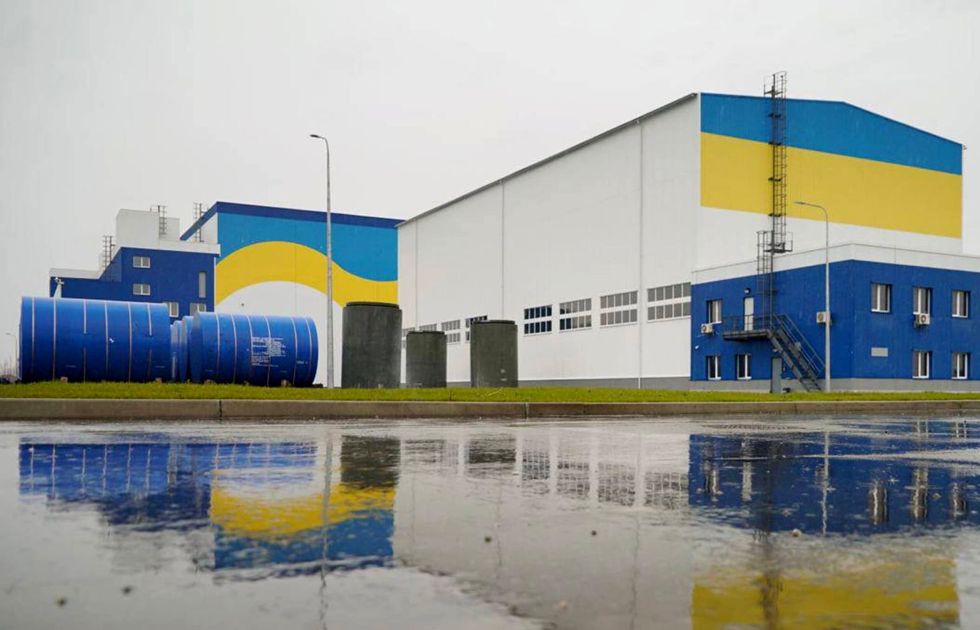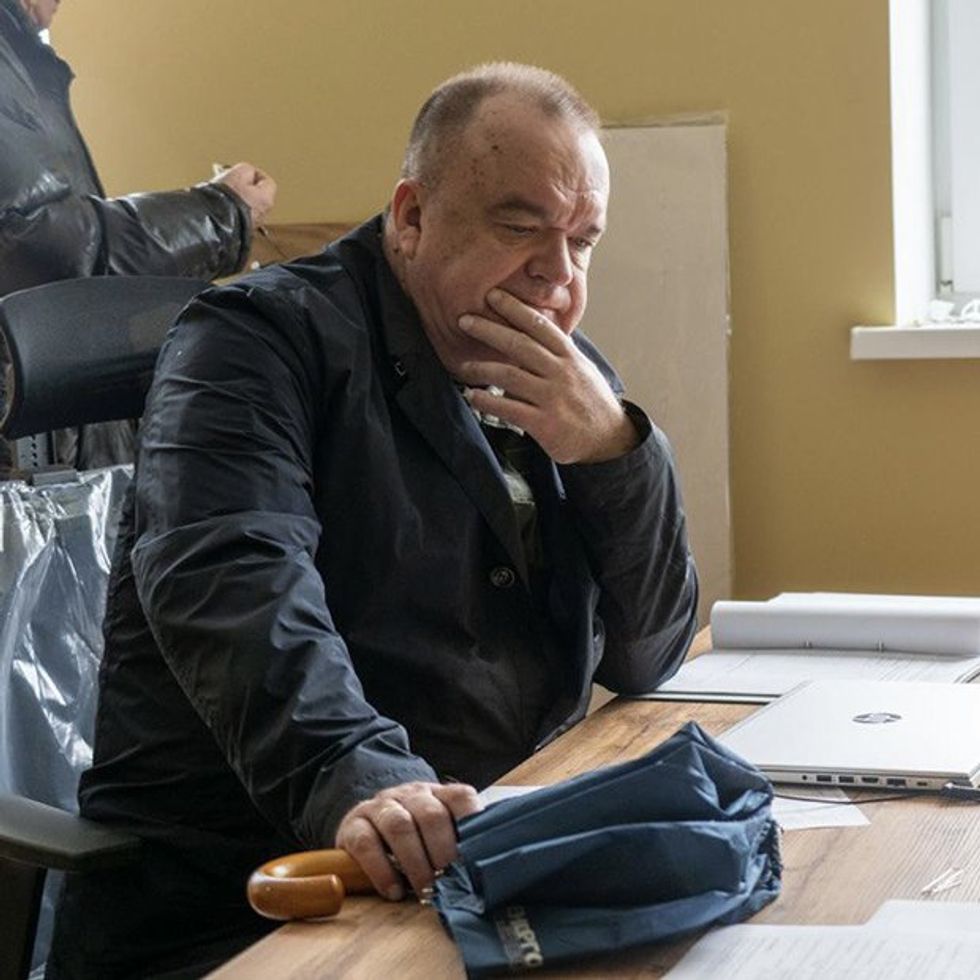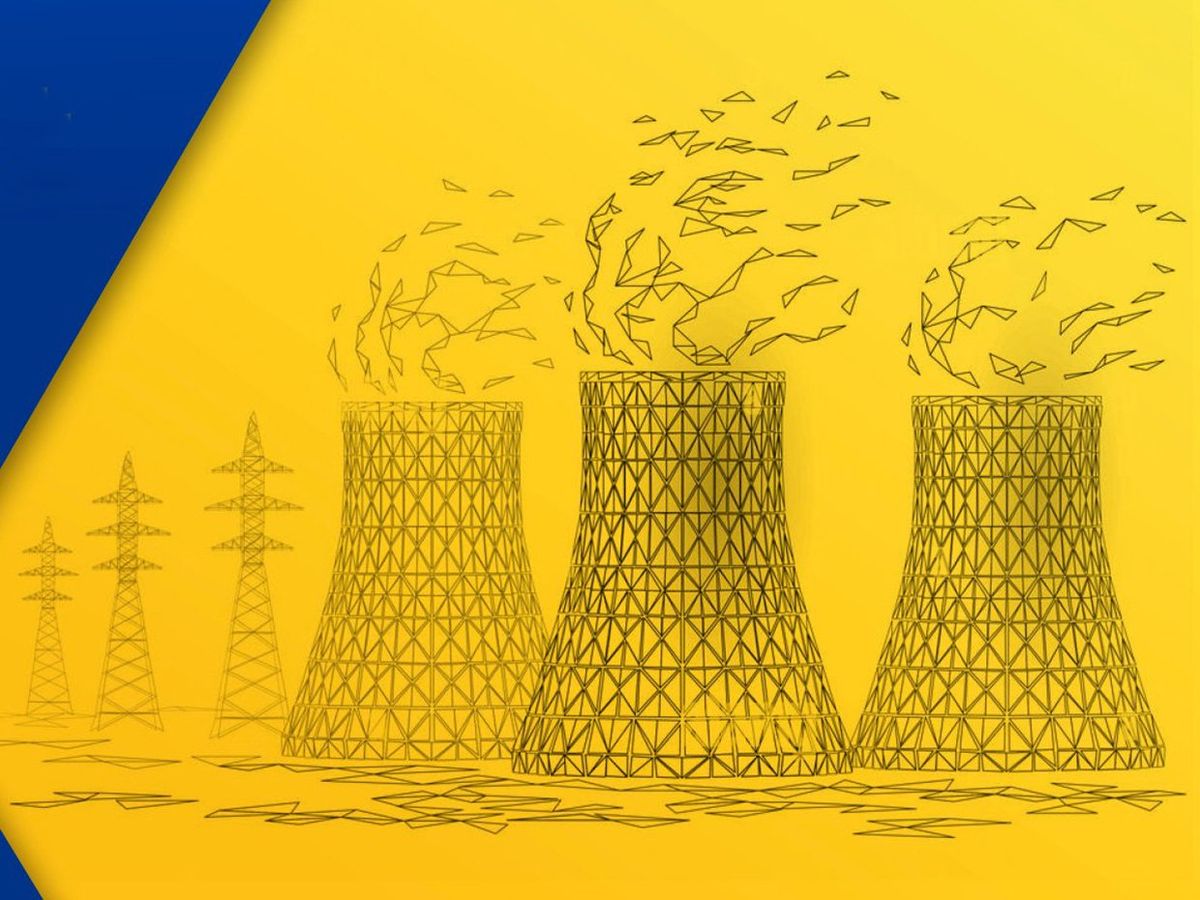Last Friday Ukrainian transmission grid operator Ukrenergo marked one year of war with a hopeful milestone—two straight weeks without rolling blackouts. For sure, some cities at the front suffered outages. But the big picture was clear: Power engineers had delivered the grid through the worst of the winter and Russia’s onslaught, including hundreds of missiles and drones fired at Ukraine’s energy system.
However, a new energy challenge looms over the months and perhaps years ahead: keeping Ukraine’s nuclear power plants running.
Nuclear energy has fallen off the radar screen since September, when the Russian-occupied Zaporizhzhia nuclear plant finally shut down. But Ukraine’s reliance on the three nuclear plants still operating—as well as their vulnerability—has never been higher.
A letter from a prominent member of Ukraine’s nuclear establishment warns of an “emerging critical situation” with “catastrophic” implications for Ukraine’s defense.
Ukraine has lost 75 percent of its coal- and gas-fired power plants, and Zaporizhzhia was its largest nuclear generator. That leaves Ukraine extraordinarily dependent on the three remaining nuclear power stations—the Rivne, Khmelnytskyi and South Ukraine plants. Before the invasion, those plants’ nine reactors supplied one-quarter of Ukraine’s electricity. Now they provide at least half.
The nuclear plants face a perpetual threat of Russian attack, as well as damage to their turbine generators when Russia’s persistent bombardment of substations causes AC power fluctuations. Power glitches tossed one of Khmelnytsky’s units offline last month.
Keeping reactors fueled may pose an even bigger challenge. Ukraine is running short of fresh fuel, which must be swapped in in every 12 months. Meanwhile, spent fuel backing up at the plants is complicating those swaps.
Petro Kotin, CEO of Ukraine’s state-owned nuclear power company, Energoatom, brushed aside fuel concerns in January, telling Bloomberg that Ukraine has “several years’ worth of fuel” on hand. But his reassurances have faced pushback.
One Ukrainian nuclear expert says only “extraordinary measures” can keep Ukraine from losing thousands of megawatts of nuclear output. Another, a former secretary of Ukraine’s parliamentary energy committee, Victoria Voytsitska, was in Washington, D.C., this week pleading for help from Congress and federal agencies to secure Ukraine’s fuel supply.
Voytsitska’s message is that Ukraine is running out of time: “Our ability to survive and win this war is directly linked [to] and dependent on...generating enough electricity.”
Catastrophic shortfalls ahead?
Refueling concerns began spreading thanks to a letter written last month by Nikolai Steinberg, an éminence grise of Ukraine’s nuclear energy establishment, who was once chief engineer at Chernobyl and a governing director of the International Atomic Energy Agency. Steinberg’s letter, circulated to colleagues and seen by IEEE Spectrum, warns of an “emerging critical situation” with “catastrophic” implications for Ukraine’s defense.
Ukraine and most other European countries with Russian-design reactors use fuel from the Moscow-based nuclear-energy giant Rosatom. Pittsburgh-based Westinghouse Electric is their only alternative fuel supplier, and demand far outstrips its supply.
Steinberg based his concerns on an assessment by Ukrainian nuclear experts that reviewed fuel availability from Westinghouse, as well as equipment needed to upgrade reactor controls and instrumentation to use that fuel.
One former Energoatom official is already under house arrest for allegedly fraudulent power sales in 2020.
“Our staff has relevant experience. The question is the availability of components,” stated Steinberg in an email exchange with IEEE Spectrum last week.
Steinberg’s letter states that, without the required supplies, Energoatom stands to lose 2,400 megawatts of nuclear generating capacity this year, and a further 4,000 MW in 2024.
Pavlo Pavlyshyn, former director of the Rivne Nuclear Power Plant, calls Steinberg’s warning “important.” Now deputy mayor of nearby Varash, Pavlyshyn says the fuel on-site will sustain only one of its two 440-MW reactors this year.
Westinghouse makes fuel for Ukraine’s 1,000-MW plants, but it must revive a plant in Sweden to supply Rivne’s smaller reactors. That fuel isn’t expected to begin shipping until early 2024. Plus, it was designed for a slightly different kind of reactor and therefore must first be cleared for use at Rivne.
Energoatom insists that all of its nuclear power units will be “supplied” with Westinghouse fuel “starting from 2024.”
And then there’s the overcrowding at reactor fuel pools. That congestion could still stall the refueling effort, even if Energoatom efficiently upgrades and relicenses its reactors and Westinghouse delivers sufficient fuel in time.
Historically, Energoatom maintained free pool space by shipping partially cooled fuel to Russia for processing every time it added superheated fuel to a pool. But it paused fuel removals in anticipation of a storage facility under construction at Chernobyl, beside the Belorussian border north of Kyiv. “Almost no spent fuel was removed for several years,” said Steinberg.

After several years’ delay and premature declarations of the facility’s completion by Energoatom CEO Kotin and Minister of Energy German Galushchenko, Kotin once again declared the company ready to take fuel shipments early last year. Unfortunately, by then its readiness was irrelevant. Shipping canisters of highly radioactive material weighing up to 200 tonnes is considered unsafe amid Russia’s aerial barrages—especially deliveries to the Chernobyl area that Russian troops overran within hours last February.
Energoatom now seeks a regulatory sign-off to put spent fuel in shipping canisters and temporarily tuck them into the corridors of reactor containment buildings, according to a Ukrainian nuclear expert contacted by Spectrum. “For one year it is justified,” he says.
Voytsitska says Ukraine needs better air defenses to transport both fresh and spent fuel, and to secure its spent fuel storage facility. “The storage facility at Chernobyl has to become operational and for that we need extra protection,” she says.
Voytsitska notes that international partners secured the deal to safely move Ukraine’s grain. She says they must also help Ukraine move nuclear fuel.
Energoatom’s head in the game?
Steinberg said he circulated his letter hoping that someone would convey his concerns to Ukraine’s “senior leadership,” expressing doubt that Energoatom or the Ministry of Energy would inform them of the “true state of affairs.” His doubts are not unique. Kotin and other Energoatom executives, as well as energy minister Galushchenko, face revived and expanded allegations of corruption and Russian influence.
One former official appointed under Kotin’s watch is already under house arrest for allegedly fraudulent power sales in 2020. And additional allegations of irregular electricity sales since the invasion may have weakened Energoatom’s reactor refueling program.
Spectrum covered scrutiny of Kotin and his team last March and July. Questions resurfaced this January after a series of high-profile firings by President Zelenskyy. Energoatom personnel director Oleg Boyarintsev fled the country two days later, according to a Facebook post by longtime Kotin critic Olga Kosharna. Sources contacted by Spectrum independently confirm Boyarintsev’s departure.

In mid-February, Kosharna added that both Boyarintsev and Energoatom security chief Sergey Rossokha had resigned. Energoatom says they “voluntarily resigned.”
Ukraine’s High Anti-Corruption Court weighed in last month, placing another former Energoatom official under house detention. Government investigators allege that fraudulent power sales in 2020 by the former director of energy trading, Aleksey Statnik, cost the utility UAH 93.76 million (US $2.55 million). The winning bidder passed the electricity to steel plants owned by Ukrainian oligarch Igor Kolomoisky, who also faces scrutiny by investigators.
Statnik could, however, be taking the fall for higher-ups, based on reporting by Kyiv-based energy news outlet Kosatka Media in 2021.
Kosatka Media documented that Statnik, hired in September and fired in October, was the last in a string of revolving Energoatom trading directors. It quoted the utility’s former anticorruption officer Oleh Polishchuk explaining that Statnik ran afoul of Energoatom finance chief Hartmut Jacob by refusing to execute Jacob’s “dubious instructions on the sale of electricity.”
The article included a 9 October 2020 memo from Statnik documenting how illogical trades were bleeding Energoatom’s coffers. After that memo—and mere weeks on the job— Statnik was sent on vacation, according to Polishchuk’s account. At which point Jacob, with Kotin’s authorization, personally executed more money-losing trades.
Energoatom eliminated Statnik’s position before he returned from vacation. Polishchuk himself was dismissed by Boyarintsev and Kotin after he questioned the trades as well as bonuses paid to Jacob and energy minister Galushchenko, who was then an Energoatom vice president; a Ukrainian judge deemed his dismissal illegal.
The link between dodgy trades and Energoatom’s refueling challenges appear in separate allegations by Viktor Kurtiev, a Ukrainian energy expert and entrepreneur. Kurtiev asserts in a December 2022 article that the Ministry of Energy and Energoatom organized a shell game last year that diverted part of a UAH 1.5 billion loan secured by Energoatom for the purchase of Westinghouse fuel.
According to documents Kurtiev obtained, Energoatom handed one-third of those funds to another state firm so that it could buy power from Energoatom and export it to Europe. That state firm, Kurtiev alleges, then shared its export rights with a private trader. The net result, Kurtiev tells Spectrum, was that both Energoatom and the state trading firm appear to have lost money on profitable sales.
In an email response, Energoatom says that it trades “according to the Law of Ukraine on the Electric Energy Market.” It adds that “Currently, Energoatom fully cooperates with law enforcement authorities.”
What’s most damaging, if the allegations are proven, is how Energoatom generated surplus power to export: by ignoring safety experts and operating its embattled Zaporizhzhia nuclear plant amid hostile fire and repeated blackouts.
What’s most bizarre is the fact that Energoatom could have simply executed the sales itself, earning profits that it could now be using to buy fuel.
- Covert Actions Heighten Ukraine’s Nuclear Peril ›
- Nuclear Energy Brinkmanship in Ukraine ›
- Case for Accelerating Dry Cask Storage of Spent Nuclear Fuel ... ›
Peter Fairley has been tracking energy technologies and their environmental implications globally for over two decades, charting engineering and policy innovations that could slash dependence on fossil fuels and the political forces fighting them. He has been a Contributing Editor with IEEE Spectrum since 2003.



